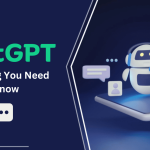
Google recently launched an exciting update that changes how we use its search engine. AI Mode goes beyond old-school keyword matching and instead talks back in a smart, conversational way that picks up on context and subtle meaning.
This update isn’t just a small tweak. It’s a big leap toward making search feel more like a dialogue between people. Now, instead of typing a list of keywords and scrolling through many links, you can ask detailed questions and get full, organized answers pulled from many parts of the web.
This change will matter to everyone. Creators, marketers, and business owners need to know how AI Mode works and when it works best, since it could influence whether people see their content in search. Regular users will appreciate quicker access to trustworthy info that feels intuitive.
What Google AI Mode Does
Google AI Mode uses smart large language models to understand search queries like never before. When the feature is on, it figures out what you really want to know, takes the surrounding details into account, and creates answers that pull information from many reliable sources to give you a complete picture.
Unlike regular search results that show a list of links to open, AI Mode gives you direct answers and shows where the info came from. It feels like asking a smart friend for help, only this friend can search the whole internet in the blink of an eye.
AI Mode sits on top of Google’s smart tools, using the Gemini language model and all the search upgrades the company has developed over the years. But this mode lets you talk to the AI like you would to another person, allowing it to answer follow-up questions, clear up any confusing parts, and fine-tune its replies to fit exactly what you’re looking for.
What Makes AI Mode Unique
Talk to It Like a Person
AI Mode is great at knowing what you mean when you talk naturally. You don’t have to fit your words into a strict search box. If you say, “Which pizza place in New York City is best, open late, and will deliver to Brooklyn?” it gets the whole question at once and gives you a clear answer.
You can keep the conversation going without retyping the original question. If you want a different type of topping, the estimated price, or info on the next subway station, just ask. The AI knows the back-and-forth flow, making it feel like you’re having an actual conversation rather than a robot reply.
Source Attribution and Transparency
Every response generated by AI Mode includes links back to the original sources it drew on. This runs two ways: first, it lets you check the information and explore the topic more deeply; second, it gives credit to the creators whose work you’re reading.
The citation system isn’t just about dropping in URLs. AI Mode often tells you why it picked certain sources and how different facts came together to shape the answer. This extra detail helps you judge how trustworthy and complete the information really is.
Multi-Modal Integration
AI Mode blends text, images, and other media types to give you richer answers. When you ask about a historical event, you might see a written summary plus maps, photos, and sometimes even short videos that help explain the topic more clearly.
This method is especially useful for visual learners or big, complicated subjects that ask for different ways of explaining. The system picks the media that will help the most, based on the question you ask and the information at hand.
Contextual Understanding
What’s really impressive is how well AI Mode remembers. It keeps track of the questions you’ve asked in the current session and uses that context to build better, more personal answers as you go along. Whether you jump around or stick to one topic, the information stays relevant to what you’ve already discussed.
Thanks to contextual awareness, Google’s AI can keep track of what you’ve already searched for in the same session. So if you first ask about climate change, the AI will remember, letting you later ask, “How does this affect coastal cities?” and it will know you’re still focused on climate change.
How to Access Google’s AI Mode
Right now, Google’s AI Mode is still in limited release. It’s mainly for people enrolled in the Search Labs program. To use it, you need a Google account and to sign up for the experimental features.
To see if you have it, open Google Search and look for the little lab beaker icon in the top right. If you find it, you can turn on AI Mode in the Search Labs menu. After you turn it on, a new option will appear, letting you switch between the regular search and the AI Mode.
Google plans to offer it to more people in the future, but there’s no exact date. The company is expanding access slowly, checking how well the AI performs and how people respond. This careful rollout helps make sure the technology is ready before it becomes widely available.
For folks who don’t have Google’s experimental AI Mode, similar features pop up in Bard (now part of Gemini) and some Google Workspace apps. These tools aren’t exactly the same, but they show where Google’s AI-powered search is headed.
Why Google AI Mode Matters for You
Better Information Discovery
AI Mode changes the game for finding and consuming information online. Rather than hopping from one page to another to piece together answers, you get well-rounded replies that pull together facts from many sites.
This is a big deal for research topics that normally eat up hours of your time. Whether you’re checking health facts, troubleshooting a device, or comparing prices, AI Mode crunches the data and serves you a summary in record time.
Less Information Overload
Today’s web throws so much information at you that it’s easy to freeze up. AI Mode plays the part of a smart filter, zeroing in on the most relevant and trustworthy sources and then crunching that data into easy-to-read formats.
This helps you escape “information paralysis”—that frustrating moment when too many choices and too many opinions stop you from picking one. With curated and summarized replies, AI Mode lets you make clearer, more confident decisions.
Improved Accessibility
With AI Mode’s chat-based search, getting answers online is easier for everyone, especially those who find keyword searches tricky. You don’t have to spend time thinking of exact terms; you can just ask questions like you would to a friend. This change lowers the barrier for new users who haven’t memorized search tricks or jargon.
People who haven’t studied SEO or don’t use tech language can still find what they need. You don’t have to hammer out perfect keywords; just plain sentences work just fine.
Impact on Content Creators and Businesses
Changing SEO Landscape
As AI Mode gains popularity, the rules of search engine optimization are getting a makeover. Sure, picking the right keywords still matters, but creators also need to think about how information gets pulled into AI answers.
Now, the focus is on crafting rich, expert content that truly answers what users are after, rather than just ticking off keyword boxes. Pieces that are thorough, easy to follow, and rich in context have a better shot at getting pulled into AI answers, which can boost visibility and keep visitors clicking.
Attribution and Traffic Concerns
AI Mode does cite its sources, but that still raises questions about where the visitors actually end up. If people can see the full answer right in the search result, they might not feel the need to click through to the original page.
High-quality content that goes deeper than an AI summary still draws traffic. People often want more context, different angles, or extra detail that generative AI can miss. Creators who pack their articles with exclusive insights and thorough coverage may actually see a boost in well-targeted visitors.
New You’ll Want to Try
Winning strategies after the launch of AI search require knowing how AI summarizes and connects facts. Write material that helps readers while also keeping AI in mind. Organize your points so algorithms can find them fast.
Use clear headings, a strong hierarchy, and check your facts. Articles that answer the question head-on and include backup info are more likely to show up in AI answers and get the link that they deserve.
What Comes Next
Google AI search is just the first step in a larger shift in how we find and use info online. As AI keeps learning, we’ll see even smarter features that blend search engines with intelligent assistants.
Future versions of AI search tools are likely to remember your preferences and past queries better, talk to live data feeds for the most current info, and handle audio and video content in a more joined-up way.
When AI Mode succeeds, other search engines and info services will feel the heat to match its smarter features. This will spark a healthy race, pushing search tech to keep getting faster, smarter, and more helpful.
Users will reap the reward of quicker, clearer answers. At the same time, creators and businesses face fresh hurdles and chances, needing to adjust, stay agile, and keep delivering real value.
Getting On Board With AI-Driven Search
Google AI Mode changes the game for search. It learns speech and typing language, blends info from different places, and serves answers in the right context, all of which redesign how we find and interact with info online.
Whether you’re just looking for a fast answer or you’re a creator adapting to new search trends, knowing what Google AI Mode can do—and what it means for you—is a must. The tech aims to make information easier to find and easier to use, but thriving in this new space means accepting change and giving priority to quality, trustworthy content.
As AI Mode keeps improving and growing, keeping up with its latest features and best practices will enable you to leverage this exciting search upgrade. The new search landscape is conversational, smart, and feels more human—and it’s already shifting the way we find and use information online.







